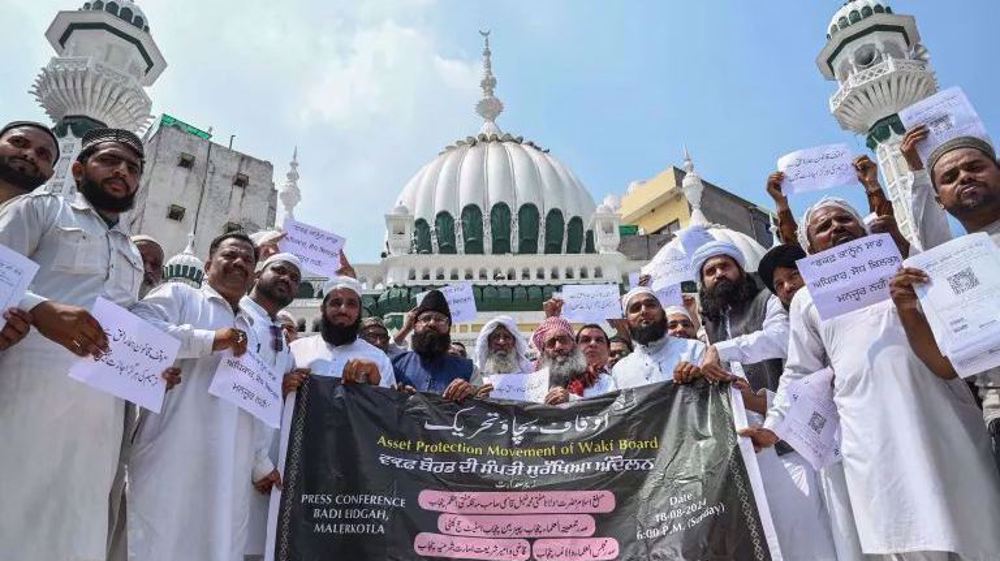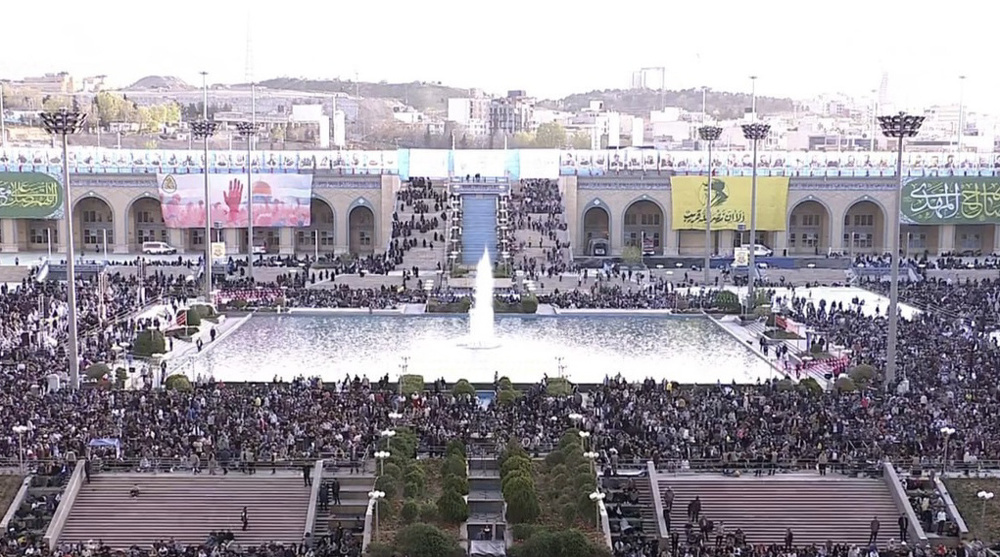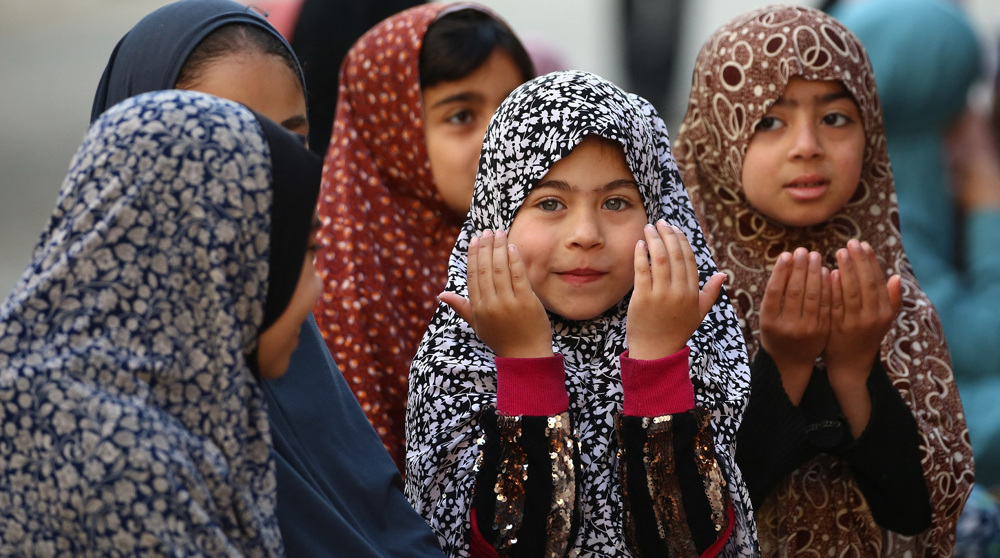Strong earthquake hits Iran-Iraq border, kills about 450
A powerful 7.3-magnitude earthquake has hit the border region between Iran and Iraq, killing about 450 people, almost all of them in Iran.
The epicenter of the quake, which occurred at around 09:18 pm local time on Sunday (0010 GMT on Monday), was 32 kilometers south of the Iraqi city of Halabja, in Iraqi Kurdistan, and just across the border from Iran, according to the United States Geological Survey (USGS).
But the highest casualties occurred in the town of Sarpol-e Zahab, in Iran’s Kermanshah Province.
According to official tallies, 445 Iranians were confirmed dead as of Monday afternoon. Over 7,156 others were also injured.

The National Disaster Management Organization of Iran said earlier that power cuts had been reported in Kermanshah Province. A number of villages in western Iran have also seen destruction of varying degrees.
Leader orders swift rescue operations
Soon after the quake occurred, Leader of the Islamic Revolution Ayatollah Seyyed Ali Khamenei issued a message calling on all Iranian officials and institutions to “rush to the aid of those affected in these early hours [after the incident].”
The Leader said the country’s entire range of capabilities had to be used swiftly to prevent a further rise in the death toll.
Ayatollah Khamenei called on Iran’s Armed Forces to help with removing the rubble and transferring the injured to medical centers.

Separately, Iranian President Hassan Rouhani spoke on the phone with Iranian Interior Minister Abdolreza Rahmani-Fazli on Sunday night, who briefed the president on the latest updates. President Rouhani then issued the necessary directives to facilitate and accelerate rescue operations.
Three days of mourning have been announced in Kermanshah.
The earthquake was felt in cities in several other Iranian provinces, including as far away as in the capital, Tehran.

The quake also shook the Iranian provinces of Kordestan, Ilam, Khuzestan, Hamedan, West Azarbaijan, East Azarbaijan, Lorestan, Qazvin, Zanjan, and Qom.
Tremors were felt in other regional countries, including Turkey, Kuwait, Armenia, Jordan, Lebanon, Saudi Arabia, Qatar, and Bahrain.
But the casualties and damage were limited to Iran and Iraq.
Government, military officials on ground zero
President Rouhani is scheduled to travel to Kermanshah Province to oversee the rescue work on Tuesday.
Rahmani-Fazli, the interior minister and Health Minister Hassan Ghazizadeh Hashemi have already flown to Kermanshah to personally supervise the rescue operations.

Commander of Iran’s Army Major General Abdolrahim Mousavi has also arrived in Sarpol-e Zahab, one of the worst-affected areas, to oversee Army rescue operations in the region.
The chief commander of the Islamic Revolution Guards Corps (IRGC), Major General Mohammad Ali Jafari, has also traveled there.
So has Iran’s Police Chief Brigadier General Hossein Ashtari.
Rescue work
First responders have been using sniffer dogs to look for potential survivors under the rubble.
Hospitals in Tehran have been put on alert to treat those of the wounded who are transferred to the capital. At least 43 ambulances, four ambulance buses, and 130 emergency technicians have been stationed in the Mehrabad Airport in Tehran for a quick transfer of the victims to hospitals.

Over 100 medics have also been dispatched to the affected areas. The Iranian Air Force, too, has deployed helicopters to accelerate the transfer of the wounded.
Iranians have been flocking to the branches of the Blood Transfusion Organization to donate blood.
Foreign condolences
Meanwhile, foreign dignitaries have been offering condolences to and sympathies with the Iranian government and people over the earthquake.
Among them are German Ambassador to Iran Michael Klor-Berchtold, Turkish Prime Minister Binali Yildirim, European Union High Representative Federica Mogherini, and the United Nations Secretary General Antonio Guterres.
Pope Francis has also sent two messages of condolences on Monday via the Vatican's secretary of state, offering prayers for those who lost their lives in Iran and Iraq as a result of the powerful earthquake.
"Upon the injured and the emergency and civil authorities engaged in rescue and recovery efforts, His Holiness invokes the divine blessings of consolation and strength," Francis said in his message.

In a message to Iran's President Hassan Rouhani on Monday, Syrian President Bashar al-Assad extended his condolences to Iranian nation, especially families of the victims and survivors of Sunday earthquake in west Iran, saying he was sure that the Iranian nation was able to weather this calamitous incident.
Russian President Vladimir Putin has also sent a message to his Iranian counterpart, expressing condolences over the deadly quake in west Iran.
In his message, which was published on the website of the Kremlin’s press office, Putin sympathized with survivors of the quake and families of the victims.
Turkish President Recep Tayyip Erdogan has also declared his country’s readiness to send humanitarian aid and necessary equipment to quake-hit regions in Iran.

In a relevant development, UK’s ambassador to Tehran, Nicholas Hopton, took to Twitter to condole with families of the quake victims and other people harmed in this natural disaster.
So sad to hear of the terrible earthquake in Kermanshah last night. My condolences to the families of those killed and sympathy to all affected. @ukiniran
— Nicholas Hopton (@NicholasHopton) November 13, 2017
Indian Prime Minister Narendra Modi has expressed condolences on his Twitter account, sympathizing with families of quake victims in Iran and Iraq.
The Foreign Ministry of Pakistan has released a statement condoling with people and governments of Iran and Iraq.
Ilham Aliyev, the president of the Republic of Azerbaijan, also sympathized with Iranian nation and survivors of the quake in a message to his Iranian counterpart, Hassan Rouhani.
Other countries expressing condolences over the deadly quake in Iran in statements of through Twitter accounts included Germany, France, Canada, Armenia, Estonia, Norway, Croatia, Lithuania, and Latvia.
Meanwhile, the president of the UN General Assembly also condoled with Iranian people over the deadly quake in western Iranian provinces.
In a post on his official Twitter account, Miroslav Lajčák expressed his concern about the rising death toll from the earthquake, which hit the border area between Iran and Iraq on Sunday, noting that the General Assembly stood with governments of both countries and quake survivors.
Worried by rising death toll from devastating #earthquake in #Iran & #Iraq. @UN General Assembly stands w/ the Governments & survivors.
— UN GA President (@UN_PGA) November 13, 2017
In another development, the government of Egypt expressed its sincere condolences to victims of the deadly earthquake that hit Iraq and Iran on Sunday.
Issuing an official statement, Egyptian Foreign Ministry said on Monday that "Cairo extends its deepest condolences to the families of victims of the devastating earthquake and stands with the Iraqi and Iranian nations in this ordeal.”
In Iraq
Reports said 11 people had been killed in Iraq. Some 130 Iraqis were also injured.

In Iraq, the most extensive damage was in the town of Darbandikhan, 75 kilometers east of the city of Sulaymaniyah, in the semi-autonomous Kurdistan Region.
According to Kurdish Health Minister Rekawt Hama Rasheed, over 30 people were wounded in the town. “The situation there is very critical,” he said.


Indian parliament passes bill seen as step to seizure of mosques

Eid al-Fitr celebrated in Iran, other countries as holy month of Ramadan comes to a close

Iran FM calls for more unity, empathy among Muslims in Eid message
VIDEO | Parisians hold rally in support of Palestinians
Nigerian security agents plan fresh attacks on followers of Sheikh Zakzaky in Abuja: Report
Bill to seize mosques in India gains presidential assent
Over 600,000 children in Gaza at risk of ‘permanent paralysis’: Ministry
VIDEO | US, Europe anti-Trump protests
Yemen accuses US of targeting civilians in Eid airstrike
VIDEO | US bombing campaign fails to deter Yemen
Hamas calls for mass participation in general strike in West Bank






 This makes it easy to access the Press TV website
This makes it easy to access the Press TV website